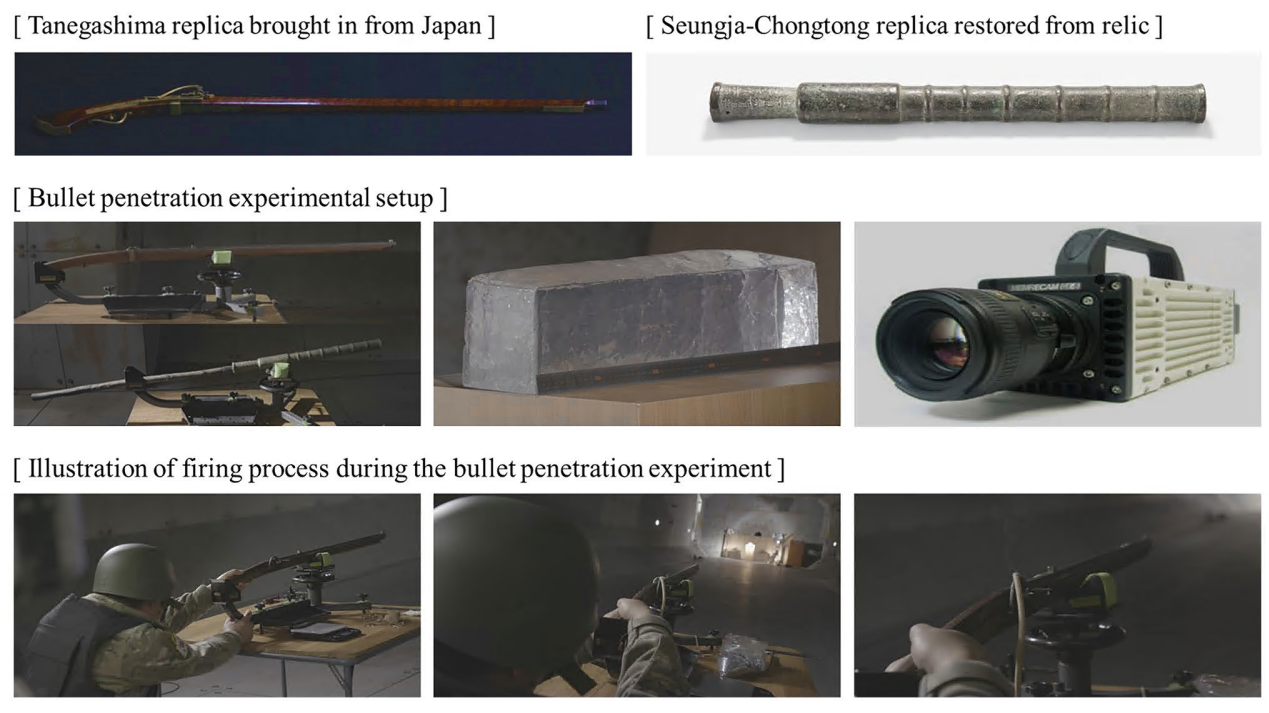[126] Lethality Evaluation of Japanese Tanegashima and Korean Seungja-Chongtong via Projectile Penetration and Mass Drop Experiments
H. M. Lee, D. Y. Kim, T. H. Kim, J. H. Kim, S. G. Sim, J. Moon, H. Kim, Y. Choi, and G. H. Yoon. Experimental Mechanics 63, no. 3 (2023): 415-427.
Background The Japanese invasion of the Korean peninsula lasted from 1592 to 1598, where Japan had the upper hand in infantry warfare based on superior firepower. The representative portable personal firepower weapons were the Japanese Tanegashima (matchlock musket) and the Korean Seungja-Chongtong (hand cannon). Objective To provide an engineering aspect and explanation for the firepower difference in infantry warfare, this work aims to evaluate the lethality of the two weapons using projectile penetration and mass drop experiments. Methods The projectile penetration experiment was conducted by firing the weapons at ballistic gelatin blocks and capturing the images of the projectiles using a high-speed camera. The mass drop experiment was conducted by dropping impactors on wooden specimens to obtain data on impact force values. Analyses were conducted using the captured projectile images and impact force data to compare the diameters of temporary cavities formed in gelatin blocks, shooting ranges, and projectile energies of the two weapons. Additionally, finite element method (FEM)-based simulations using ANSYS Workbench Explicit Dynamics were performed to further investigate the degree of injuries caused by the two weapons. Results From the experiments, it was found that the Tanegashima is more lethal compared to the Seungja-Chongtong in terms of wounding potential, shooting range, and energy value. Simulation revealed that more energy is transferred from the projectile to impacted object when Tanegashima is utilized. Conclusions The results allow the lethality evaluation of the main weapons used by the two countries. They also demonstrate the engineering aspect of Japanese dominance in infantry warfare at the time of the invasion.
